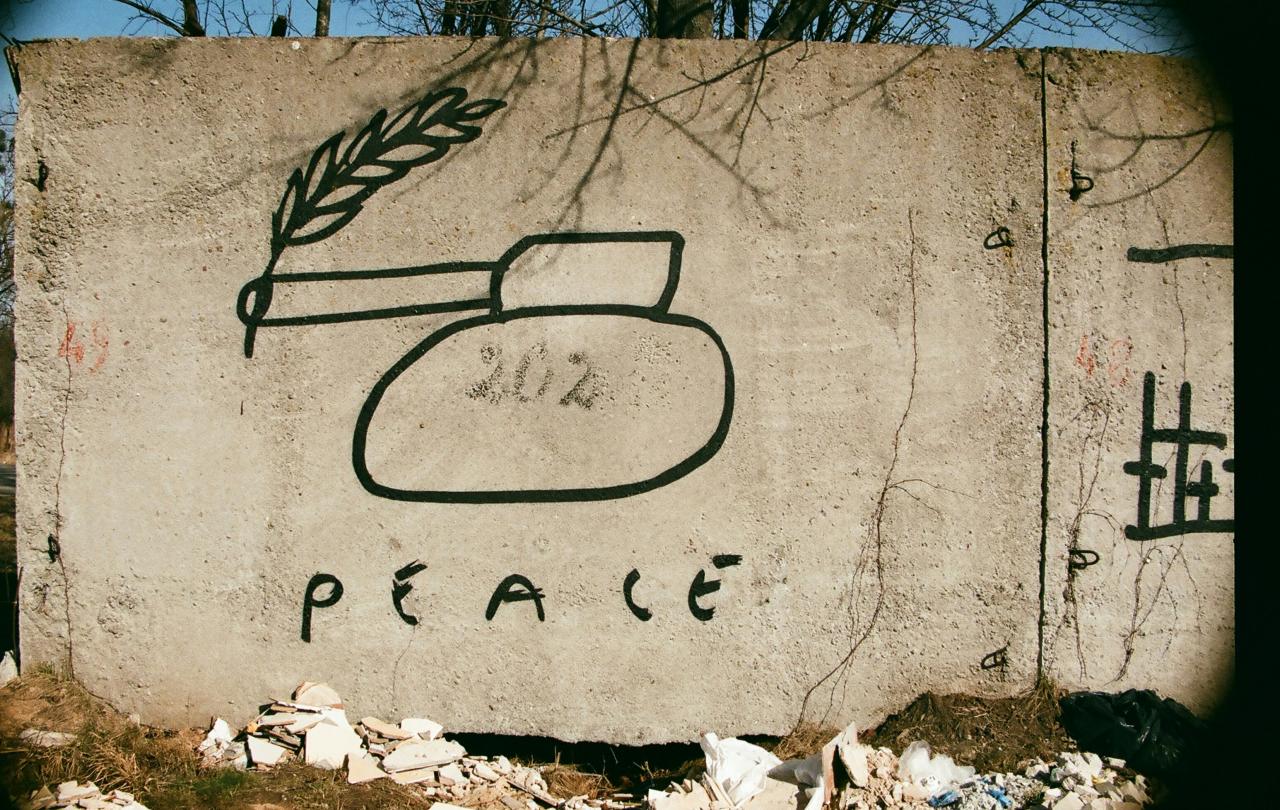
‘Blessed are the peacemakers!’
You can’t really argue with that, can you? It is a truth universally acknowledged, that is deeply embedded in our cultural identity. Like the inherent value of family, fairness and a decent cup of tea, being in favour of peace is of the essence of virtue. After all, who’s going to want to sign up and aspire to an ethic of ‘blessed are the conflict creators’?
But I have begun to wonder whether it’s as clear as all that, and if our intuitive assumptions stand scrutiny.
Of course, we all want ‘peace on earth’, to live peaceful lives in peaceful communities and, at least sometimes, to have some ‘peace and quiet’. Peace is a good thing. We desire it, we embrace it, and we honour those who make it.
But I’m no longer sure we properly grasp what it’s all about. I’ve been on a bit of a journey of late. I’ve come to conclude that it is all a bit murky when you dig beneath the surface.
For a start I have realised that I’m not tuning into the news as much as I used to. OK, to be completely honest I have always been something of a news junkie, and from the Today programme on Radio 4 to various news platforms online I still consume quite a lot. But not as much as I used to.
The relentless stream of violent conflict from Ukraine, Gaza, Sudan and elsewhere to our increasingly polarized political debates, the othering of those we don’t agree with in identity politics and the vitriol of wider culture wars: it gets too much. It seems I’m not alone. A recent report from the Reuters Institute maps a ten-year trend towards disengagement with the news.
I yearn for some breakthroughs on the peacemaking front. In their absence it seems that there is only so much I can take.
Then, my attention was drawn to a piece on the Axios news platform. The headline read, ‘Trump's deep obsession: Winning a Nobel Peace Prize’. That sent me down a rabbit hole.
Now I did already have a half-memory that in his first term President Trump had been a little resentful of the fact that Barak Obama had received the prize while he hadn’t. But it seems it’s more of a thing than that.
Axios reported that he has been ‘obsessed’ with winning the prize for years and that his present administration ‘is aggressively pushing him for a Nobel’. They even suggested that it was the subtext to the Oval Office blowup with Ukrainian President Zelensky.
In fact, President Trump has been nominated for the prize on numerous occasions since 2016, with lawmakers from the US, Scandinavia and Australia putting his name forward.
Awarded 105 times since 1901, while Dr Martin Luther King jr, Nelson Mandela and Mother Teresa might seem to epitomise such an award, there have also been controversies.
The awards given to Mikhail Gorbachev, Yitzhak Rabin, Shimon Peres and Yasser Arafat were particularly controversial. But it was the 1973 award to Henry Kissinger that caused the biggest stir leading two of the five members of the selection committee to resign in protest and howls of derision from the press.
Finally, home alone one evening, I stumbled across Monty Python’s Life of Brian as I surfed the streaming platforms for something to watch. It’s years since I watched it, but it contains one of my favourite scenes of all time.
Jesus is pictured delivering his ‘sermon on the mount’ from atop a small hillock. The camera pans out to the back of the crowd where they’re finding it hard to hear what he’s saying. The conversation goes something like this:
What was that?
I think it was 'Blessed are the cheesemakers.'
Ahh, what's so special about the cheesemakers?
Well, obviously, this is not meant to be taken literally. It refers to any manufacturers of dairy products.
It was chuckling to myself to this familiar pun that provoked a deeper dive. What was Jesus actually wanting to say? What did the crowd hear him say?
A quick look back to the Sermon on the Mount confirmed that ‘the blessings’ that start it off are mainly to those in a seeming position of disadvantage: ‘the poor in spirit … those who mourn … the meek … the merciful … the persecuted’. Why does Jesus include peacemakers who ought to be acclaimed by everyone? They’re the ones doing good stuff with positive benefits. They should be universally acclaimed, why do they need a special blessing?
From the angelic ‘peace on earth’ that heralded Jesus’ birth, to his final gift to his friends, ‘Peace I leave with you; my peace I give you,’ peace is at the heart of what Jesus is about. Receiving peace, giving peace, making peace, ‘peace be with you,’ ‘go in peace,’ peace is littered throughout the gospel stories.
Of course, for Jesus this is shalom or, back in the Aramaic of his mother-tongue shlama. While an everyday greeting the idea infused in the word is far deeper and richer: it is about wholeness and well-being and harmony. Rather than just the absence of noise and conflict, this kind of peace has substance and depth.
Maybe that’s why it has to be ‘made’.
It’s interesting, isn’t it, that Jesus doesn’t say ‘blessed are the peace-lovers’ who merely experience and consume the life of peace. Neither does he major on ‘blessed are the peacekeepers’ who police its boundaries. No, it’s ‘blessed are the peacemakers’, those who’ve got their sleeves rolled up and are actively forging an environment of wholeness, well-being and harmony.
No problem here then. Who’s not in favour of wholeness, well-being and harmony? Well, no-one, until we stumble across what Jesus goes on to say later in this iconic sermon:
"You have heard that it was said, 'Love your neighbour and hate your enemy.' But I tell you, love your enemies and pray for those who persecute you, that you may be children of your Father in heaven.”
According to Jesus, peacemaking is about wholeness, well-being and harmony and its scope extends to, and embraces, even our enemies. And why, because that’s how God does it:
“He causes his sun to rise on the evil and the good, and sends rain on the righteous and the unrighteous.”
This is the benchmark that informs the kind of peacemaking that Jesus is talking about.
Peacemaking always has to start with the existing situation. It is not about restoring how things used to be.
Now you could make an argument that peacemaking is a generational process. That it is about curating how we live together – as individuals, in neighbourhoods or even internationally – where we embody and model these kinds of principles. This is not achieved overnight.
We make peace and build communities in which we flourish over time. Afterall, as African Ubuntu philosophy articulates ‘I am because we are’. The well-being of each of us is dependent upon the well-being of all of us. This is a way of life, not an off-the-shelf remedy. But what about peacemaking in the middle of conflict?
This is where the peacemaking process gets to be a murky one, especially when you dig beneath the surface. Altruism on the part of people, communities and nations in conflict is rarely front and centre to what they bring to the table.
To even contemplate an authentic peacemaking process, both sides in a conflict have to want it. If this isn’t the case the peacemaker will either fail or be in danger of being manipulated as a puppet in the hands of bad actors.
To genuinely have reached the point of entering a peacemaking process, the parties concerned have to have reached the realisation that the cost of the continuing their conflict exceeds any realistic benefits they can achieve.
Peacemaking always has to start with the existing situation. It is not about restoring how things used to be. Neither is it about accomplishing the future that has been dreamed of. It is about a cold, hard grappling with how actually things are.
This is why it’s unpopular, especially with those who have being pursuing the justice of their cause, accomplishing their objectives and seeking victory rather than peace. The peacemaker is a real time and unwanted reminder that they have failed.
Then, as the peacemaking shifts into gear the one in the middle, the peacemaker, cannot take sides. Yet, inevitably, both sides will see them as partial insofar as their aspirations are traded off in the process of negotiation. The peacemakers are easily dismissed as appeasers or even as traitors to justice.
Peacemaking is always about compromise. It is about accepting how things are and trading off concerns to reach the best achievable balance. Commenting on the peace negotiations over Ukraine, Wolfgang Münchau recently wrote,
“The purpose of the peace talks is to fill in the blanks. The two sides may trade off one piece of land against another. Money will buy stuff. But peace deals are never about who is right, and who is wrong. They are not about historic claims.”
Pragmatic rather than principled, compromise is easily portrayed as a dirty word. Appearing spineless, weak and morally flawed, peacemakers are subject to both being misunderstood and misrepresented by all sides.
According to the American political scientist R.J. Rummel, who specialised in the study of war and collective violence with a view to their resolution, it is a mistake to think that ‘making’ peace is like a design, construct and build project. While he sees such a view as seductively attractive, it is misplaced to believe that peace can be centrally planned and constructed.
Rather, peace ‘emerges’ as an equilibrium establishes itself between what the parties involved honestly believe, actually want and really capable of achieving. This mutual self-knowledge cannot be mapped by an external third party and may only be partially comprehended by themselves.
The art of the peacemaker is to enable an evolving process of reciprocal adjustments. Along the way they must ensure that rebalanced relationships are supported by an ‘interlocking of mutual interests, capabilities and wills’. Peacemakers are far from being centre-stage messiah figures, it is never about them and their ideas or grand plan. Rather, they’re facilitators who must know when to self-effacingly get out of the way.
He concludes:
“Peace is a structure of expectations, a social contract. It will be kept only as the parties, for whatever reason, find it in all their intersecting interests, capabilities, and wills to do so.”
Hard-won peace can remain exceedingly fragile.
Who’d be a peacemaker?
Who would willingly open themselves up to being manipulated by bad actors. Who would subject themselves to the rejection of being unwanted, unpopular, misunderstood, misrepresented and portrayed as appeasers and traitors of justice.
To boot, they have to be self-effacing and understand that their best efforts may only ever result in precarious outcomes, if there is any fruit at all.
‘Blessed are the peacemakers!’
I guess that’s why.
In the meantime, 338 candidates have been nominated for the 2025 Nobel Peace Prize. Among them is the late Pope Francis,
"… for his unstoppable contribution to promoting binding and comprehensive peace and fraternization between people, ethnic groups and states."
The winner will be announced in October.
Celebrate our 2nd birthday!
Since Spring 2023, our readers have enjoyed over 1,000 articles. All for free.
This is made possible through the generosity of our amazing community of supporters.
If you enjoy Seen & Unseen, would you consider making a gift towards our work?
Do so by joining Behind The Seen. Alongside other benefits, you’ll receive an extra fortnightly email from me sharing my reading and reflections on the ideas that are shaping our times.
Graham Tomlin
Editor-in-Chief





